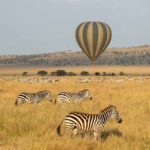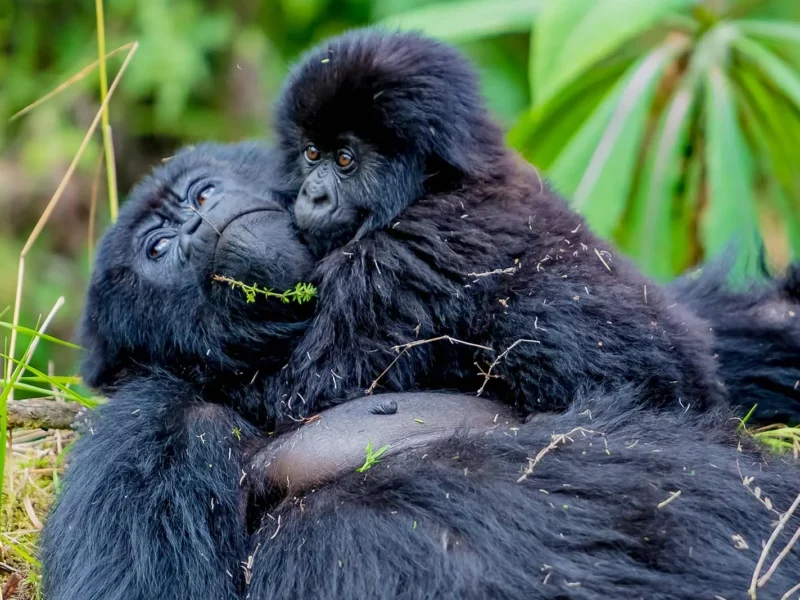
The Best Time of Year to Visit Serengeti National Park
November 19, 2025The Best Time to See the Great Migration in Kenya — And How Terenga Safaris Can Take You There
Few wildlife events on Earth rival the drama and scale of the Great Wildebeest Migration. Every year, roughly 1.5 million wildebeest, accompanied by zebras, eland, and Thomson’s gazelles, traverse the vast Serengeti–Mara ecosystem in search of fresh grazing and water. Their journey is not simply a migration it is a cyclical, life-and-death odyssey that shapes the entire ecology of East Africa.
While the migration spans both Tanzania and Kenya, many of the most iconic and breathtaking moments occur in Kenya’s Maasai Mara, especially during the river-crossing season. This is why choosing the right time to visit is crucial: a few weeks can mean the difference between witnessing a once-in-a-lifetime river crossing or missing it entirely.
Below is the most comprehensive guide to when and why to visit the Maasai Mara for the Great Migration, plus how a safari operator like Terenga Safaris can elevate your experience from memorable to extraordinary.
Understanding the Great Migration Cycle
To appreciate why Kenya is so special during migration season, it helps to understand the general flow of this massive wildlife movement:
January – March
The herds calve in the fertile southern Serengeti.
April – June
Long rains nourish the plains, and the herds begin drifting north.
July – October
The migration enters Kenya’s Maasai Mara, where dramatic river crossings unfold.
November – December
With the onset of short rains, the herds return south to Tanzania.
This annual loop is driven by rainfall and grass availability essentially, the wildebeest are following the weather. Kenya provides some of the richest grasses of the entire cycle, attracting immense densities of wildlife and predators.
The Best Time to See the Great Migration in Kenya
1. July – The First Major Arrivals
By early to mid-July, large columns of wildebeest begin massing at the Sand River and the Mara River. This marks the first wave of animals arriving in Kenya.
What to Expect
- Early river crossings
- High predator activity as prides position themselves near routes
- Dry, sunny weather with excellent visibility
- Camps near the Mara River begin to fill quickly
This month is ideal for travelers seeking the start of the migration drama.
2. August – Peak River-Crossing Season
August is widely regarded as the absolute prime month to witness Kenya’s Great Migration. The largest herds gather on the northern banks of the Mara River, creating tremendous tension and breathtaking moments.
Highlights of August
- Frequent and dramatic Mara River crossings
- Massive herds stretching as far as the eye can see
- Optimal weather for game drives
- High concentrations of lions, hyenas, and crocodiles
- Superb photography conditions with golden light and clear skies
If you are planning a once-in-a-lifetime trip, August is the safest bet for maximum migration activity.
3. September – Still Excellent, Less Crowded
Although the intensity of peak-season tourism begins to ease slightly, the wildlife action remains extraordinary.
What September Offers
- Continued river crossings (sometimes even more spectacular due to herd build-up)
- Calm weather with warm days
- Slightly fewer safari vehicles
- Great opportunities for predator sightings, especially cheetahs
For travelers seeking great migration sightings with a bit more breathing room, September is perfect.
4. October – Winding Down, but Still Remarkable
By October, the migration begins to spread widely across the Mara plains. While prime crossings may become less frequent, this is one of the best months for scenery and relaxed game-viewing.
Why Visit in October?
- Golden, picturesque landscapes
- Stable weather before the short rains
- Large resident wildlife mixed with lingering herds
- Lower prices in some camps compared to peak season
This is an excellent month for photographers, families, and travelers who enjoy less-crowded sightings.
5. Early November – The Last Herds
With the short rains, the wildebeest begin their journey back to Tanzania. While many of the huge herds have left, some stragglers remain, offering quieter and more intimate viewing experiences.
What Makes Kenya’s Migration Experience Unique?
Unmatched Access to River-Crossing Points
Kenya offers some of the best vantage points for viewing the Mara River where crocodiles, powerful currents, and sheer panic turn a simple crossing into a life-or-death struggle.
Open Savannas for Superior Visibility
The Maasai Mara’s open grasslands make it easier to track herds and predators compared to more wooded areas.
A High Density of Predators
The Mara ecosystem supports large prides of lions, fast-moving cheetahs, and intelligent hyena clans all of which capitalize on the influx of prey.
Photographic Conditions
Kenya’s dry-season light is crisp, golden, and ideal for photographers capturing action shots or sweeping landscapes.
How Terenga Safaris Helps You Experience the Great Migration
Seeing the Great Migration is not just about being in Kenya at the right time it’s about knowing where to position yourself, how long to stay, and how to maximize your chances of experiencing river crossings.
This is where Terenga Safaris comes in.
1. Migration-Specialist Itineraries
Terenga Safaris designs custom and group itineraries based specifically on migration patterns. Their guides monitor herd movements daily, ensuring you’re in the right spot at the right moment.
Whether you want:
- River-crossing front-row views
- A photography-focused safari
- A luxury tented camp experience
- Family-friendly wildlife adventures
Terenga Safaris can craft a plan tailored to your preferences.
2. Expert Safari Guides
A great guide can make or break a migration safari. Terenga Safaris employs guides who:
- Understand animal behavior deeply
- Predict herd movement
- Position vehicles safely yet strategically at crossing points
- Share Maasai culture and ecological insight
- Provide exceptional bushcraft knowledge
This level of expertise dramatically increases your chances of witnessing unforgettable moments.
3. Prime Accommodation Choices
Terenga Safaris partners with camps located close to seasonal migration hotspots, such as:
- The Mara Triangle
- The northern Mara River areas
- Conservancies bordering the Maasai Mara
Being near the action saves you long drives and lets you catch early-morning or late-afternoon events.
4. Seamless Travel Logistics
A migration safari requires coordination of:
- Domestic flights
- Ground transfers
- Park entry fees
- Flexible game-drive scheduling
- Meal arrangements and special requests
Terenga Safaris handles all of this, giving you a smooth, stress-free experience.
5. Ethical, Responsible Tourism
Terenga Safaris emphasizes sustainable travel, supporting local communities and contributing to wildlife conservation. Guests benefit from authentic cultural experiences while helping preserve Kenya’s natural heritage.
Final Thoughts
The Great Migration in Kenya is one of the world’s most dramatic wildlife spectacles and timing your visit carefully is essential. The best months to see the migration in Kenya are:
July to October (Peak Migration Season)
Especially July–August for river crossings.
By partnering with a knowledgeable operator like Terenga Safaris, you not only increase your chances of seeing these awe-inspiring moments but also enjoy a curated, expert-led journey through one of Africa’s most spectacular ecosystems.



